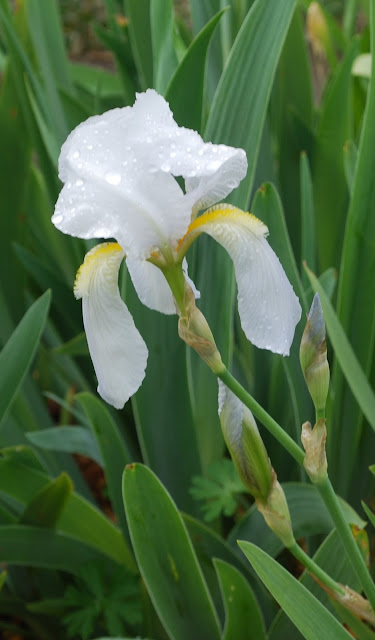 |
| IBC Tote rain water storage. 4.23.16 |
 |
| Rainwater diverter close-up. 4.23.16 |
Two weeks ago I finally completed installation of the second rain water tank. This tank is 275 gallon, used, food grade plastic. The section of roof is only about 1/4 of the house roof, so there is potential for more. After seeing that 2 rainfalls only filled the tank about 2/5 full, Ning diverted another section of the roof gutter towards this downspout for more roof area rain supply. It's raining now, so we can check in the am to see if the tank is full.
This climate here is sort of Mediterranean, with most of the rain in the late Fall, Winter, and early Spring, with mostly dry during the rest of the year. I need to water most of the garden for most of the summer. The house is at the top of a hill, the home orchard and some of the vegetable garden are downhill from the house. This, in addition to the 75 gallon tank I installed this spring, gives 350 gallons, minus some at the bottom of the 75 gallon drum that can't be accessed via the drain.
This tank system should supply most of the garden, south of the house, with much of this Summer's water needs. I have not calculated how much I used before, so it's only a guess. I can also run a hose from the tank down the hill
Roof water is not potable - who knows what lands on the roof via birds and wind? - but is usable for watering the garden.
The diverter has a simple feedback system. When the tank water level is the height of the diverter, any additional water goes down the downspout same as if the diverter wasn't there. There is a debris screen, so that any debris goes into the drain same as it would without the diverter present.










































